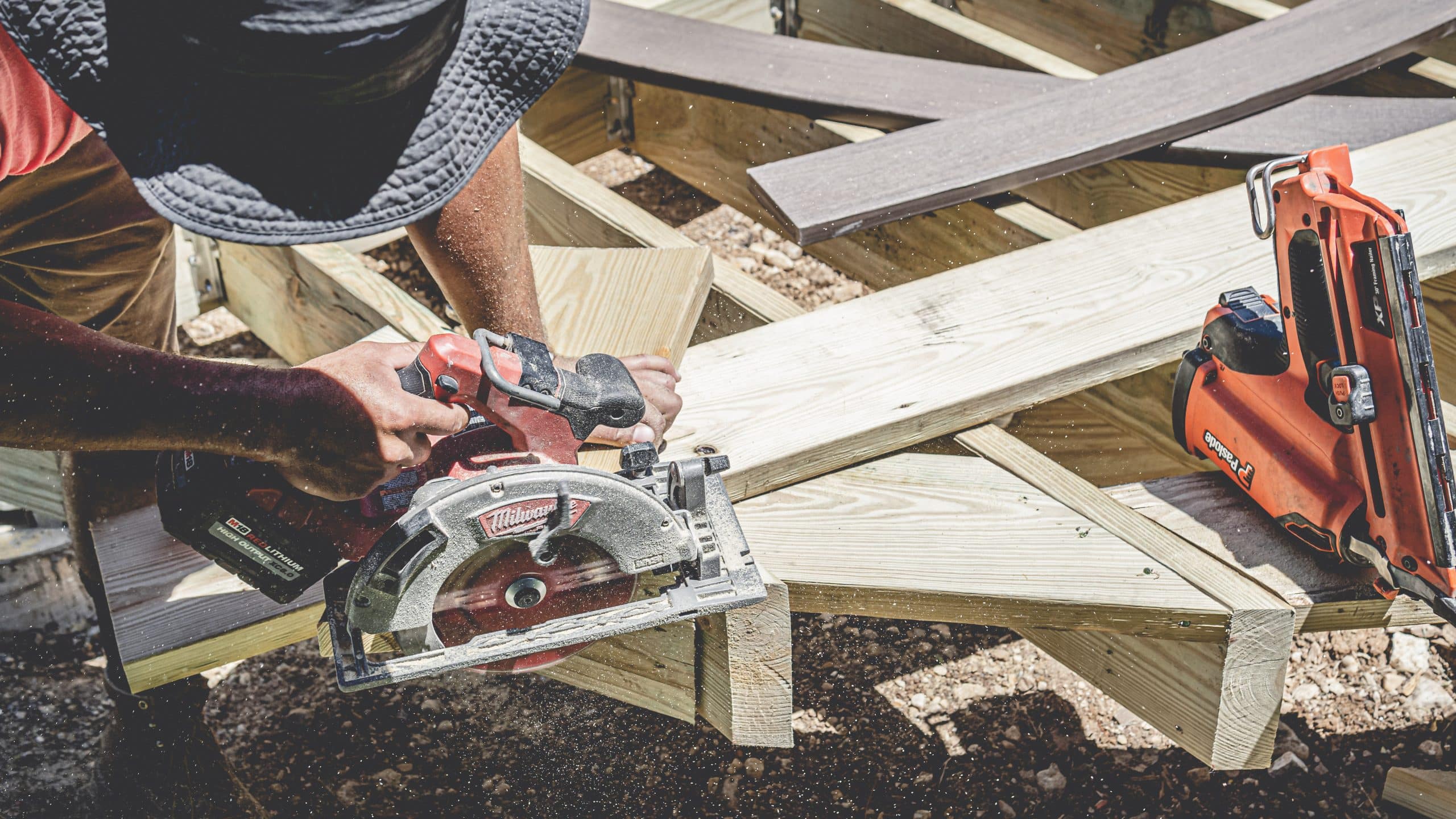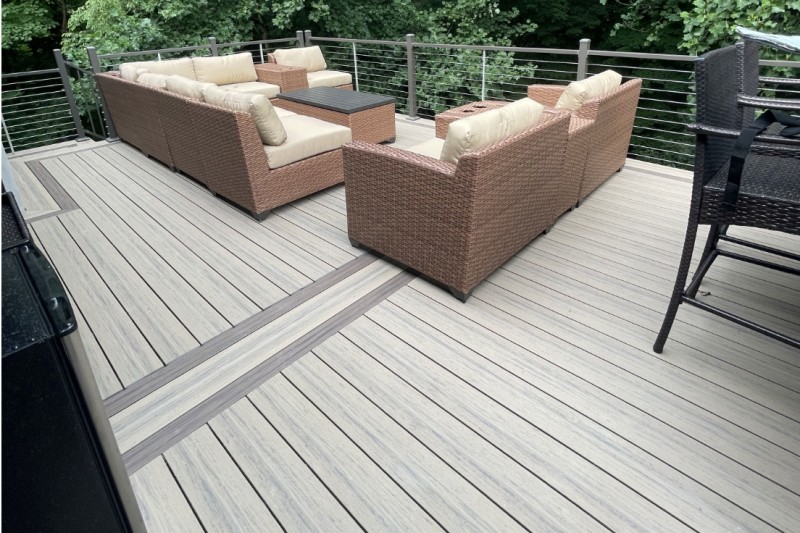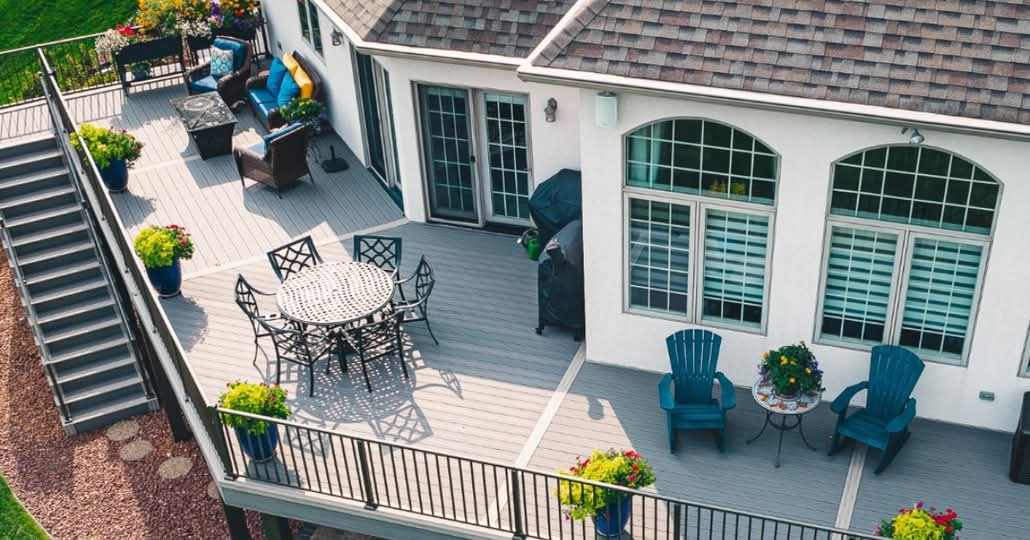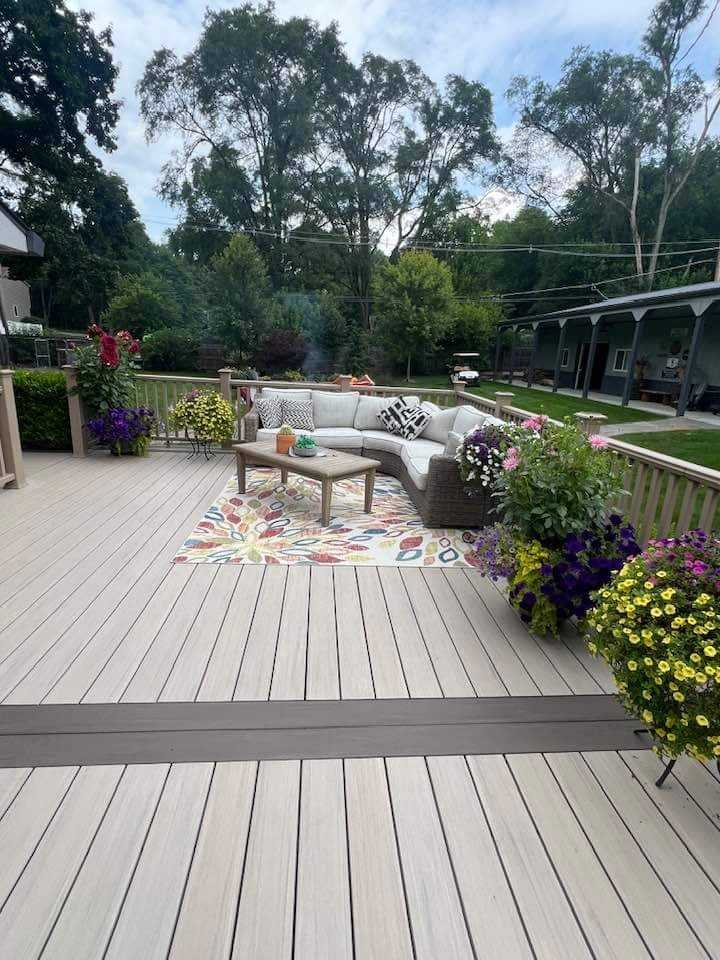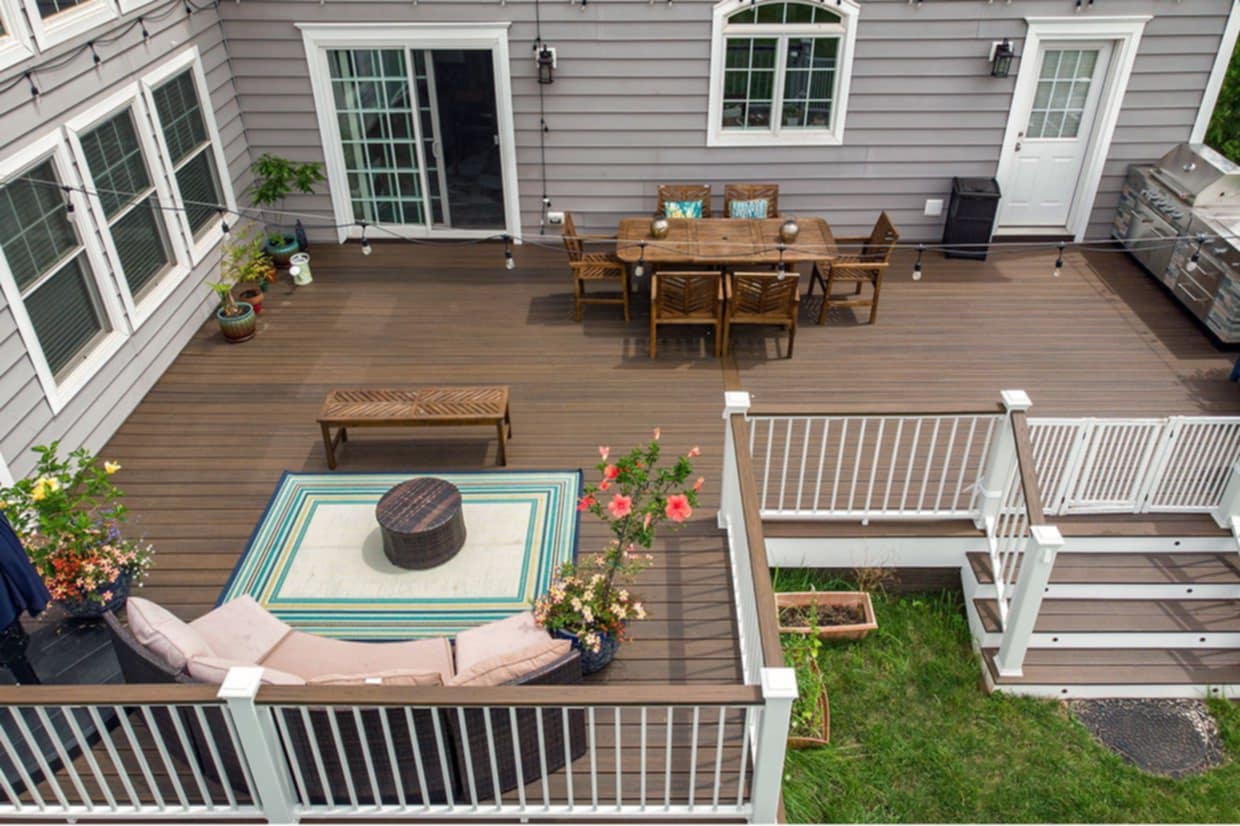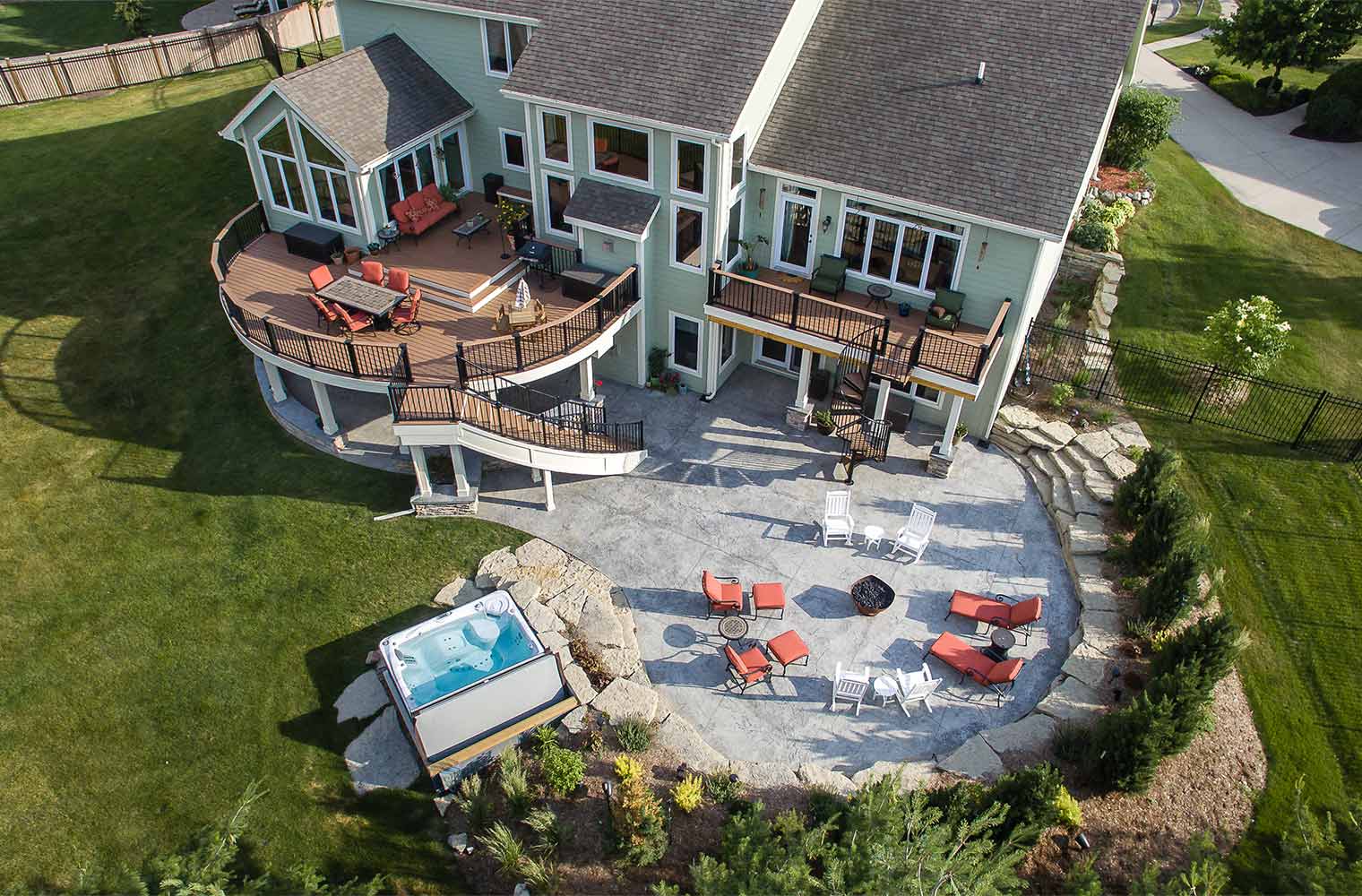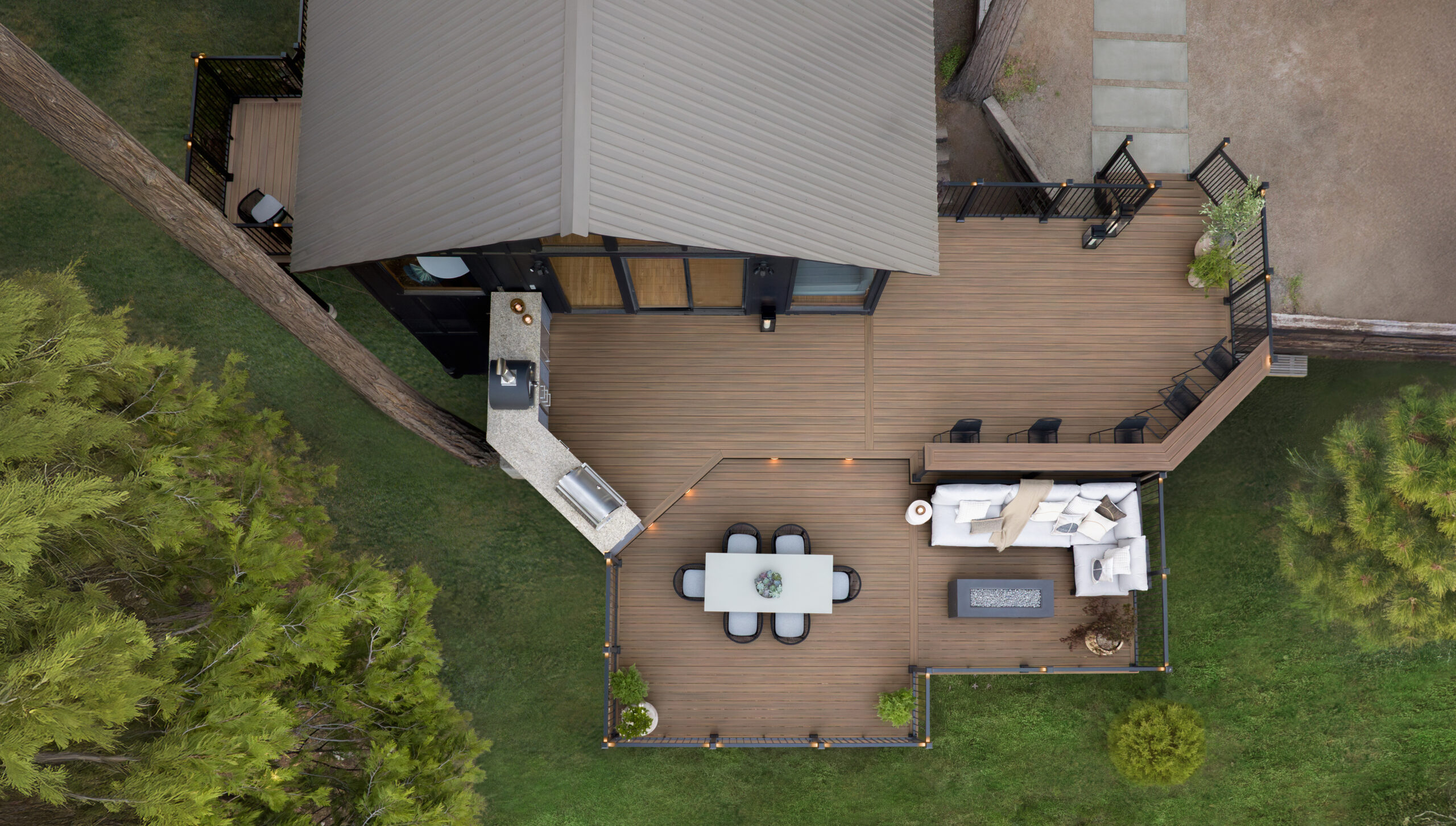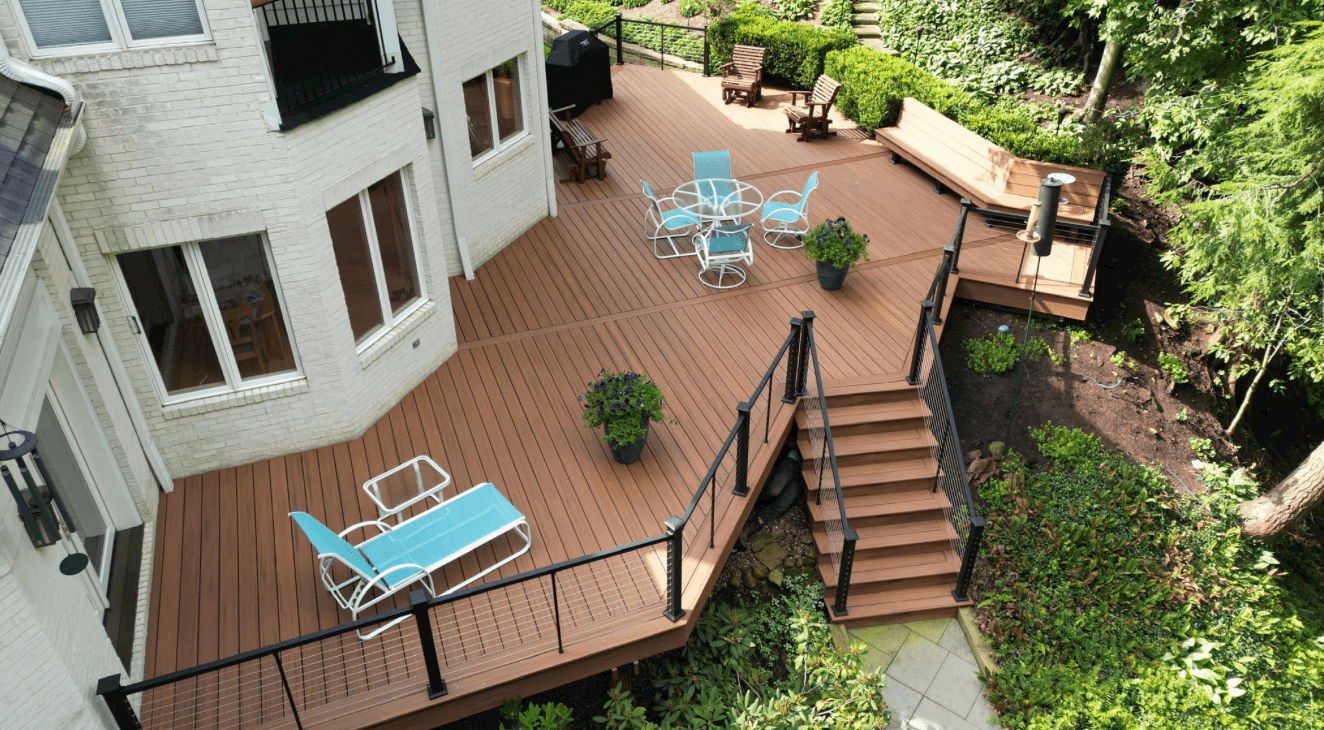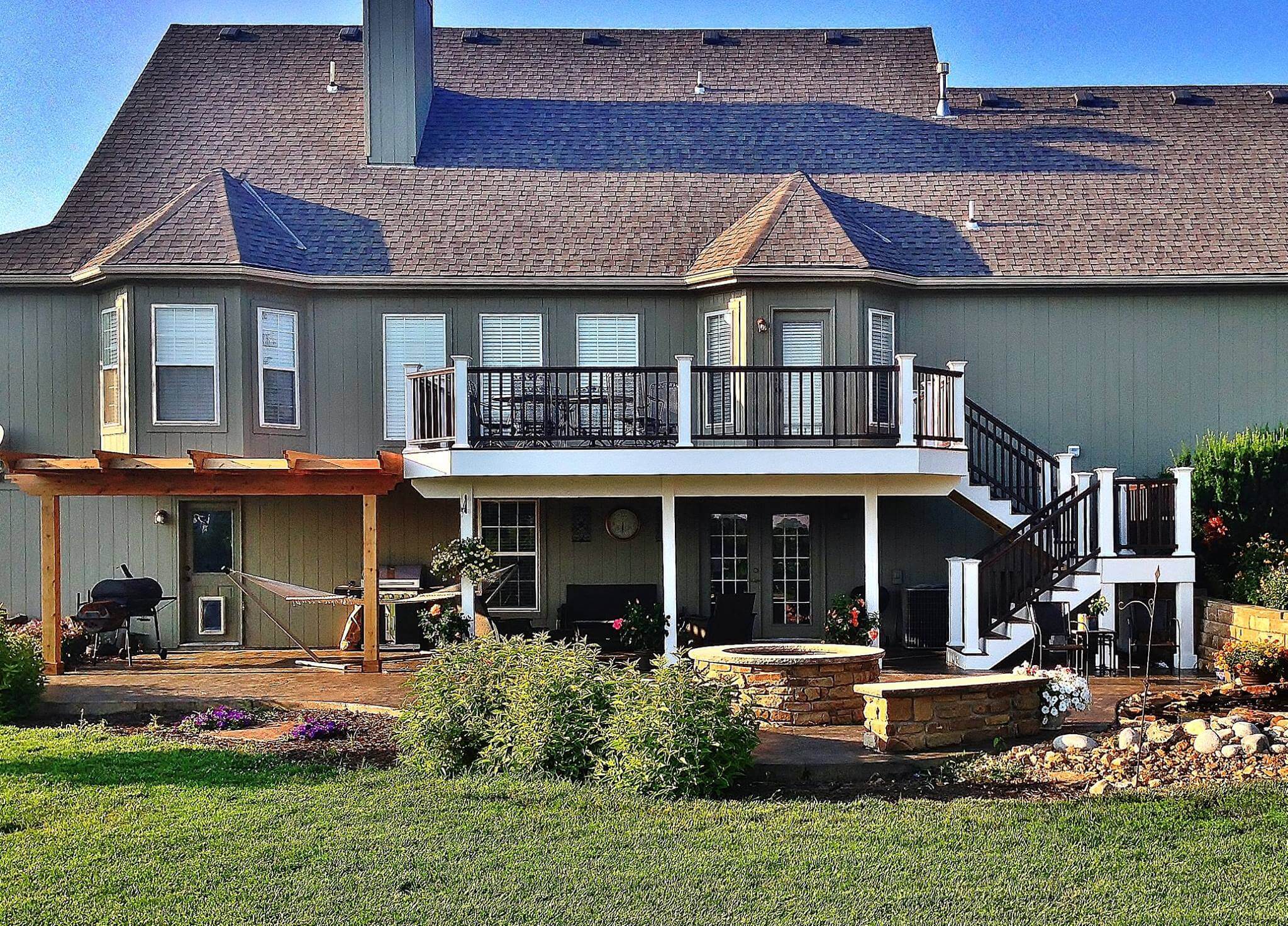Can I Reuse My Old Deck Framing to Save Money?
This phrase is probably one of the most commonly asked questions we get asked when speaking with potential customers. We are also seeing a trend where homeowners are paying companies or local handymen to come out and simply replace the decking and railing so everything looks newer. Everything looks great right after installation. But the concern is how will it look 2, 5 or 10 years down the road? This trend of keeping the old deck framing concerns us and many times the homeowners will pay so much more in the long run than if they would have made the decision to rebuild it all together.
Our responsibility is to educate homeowners so that they do not make the wrong decision.
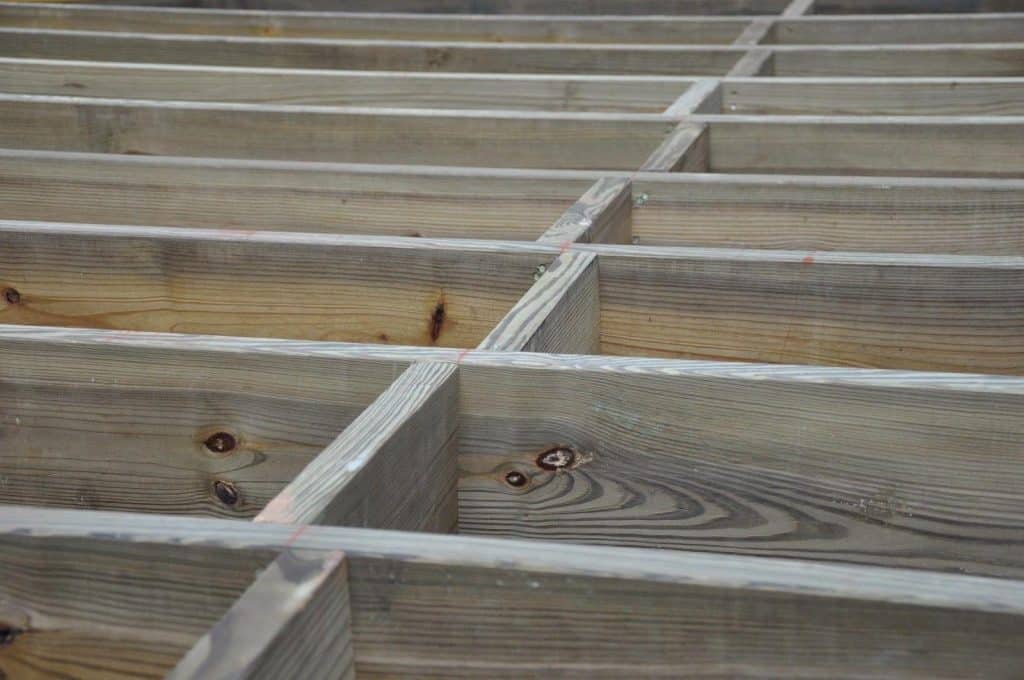
Deck Code Issues
When a composite deck is installed there is a lot of work that goes into it that often isn’t seen but will definitely affect the quality of the finished product. When framing a composite decking there’s a few things that need to be done that don’t with traditional wood decks. It is much easier to remove the old deck and start from scratch with a new wood frame.
Most importantly, depending on the age of the deck we have seen existing joists to be spaced as much as 24” apart. Current codes and composites require a maximum of 16”. Some Composites or PVC we recommend 12” joist spacing maximum because of the nature of the materials being softer. But the biggest problem we find is the difference in building codes and best building practices. If a deck is 10, 15 or 20 years old it is guaranteed not to be up to newer codes. The (International Residential Codes) IRC are updated every 3 years. The acceptable way many years ago to support a header was to bolt it to the face of the post which is no longer aloud by today’s standards, along with many other changes over the years. This often becomes a problem when trying to use existing framing. Most municipalities will not pass this during inspections, and trying to alter existing framing to meet modern codes ends up being more costly then starting from scratch.
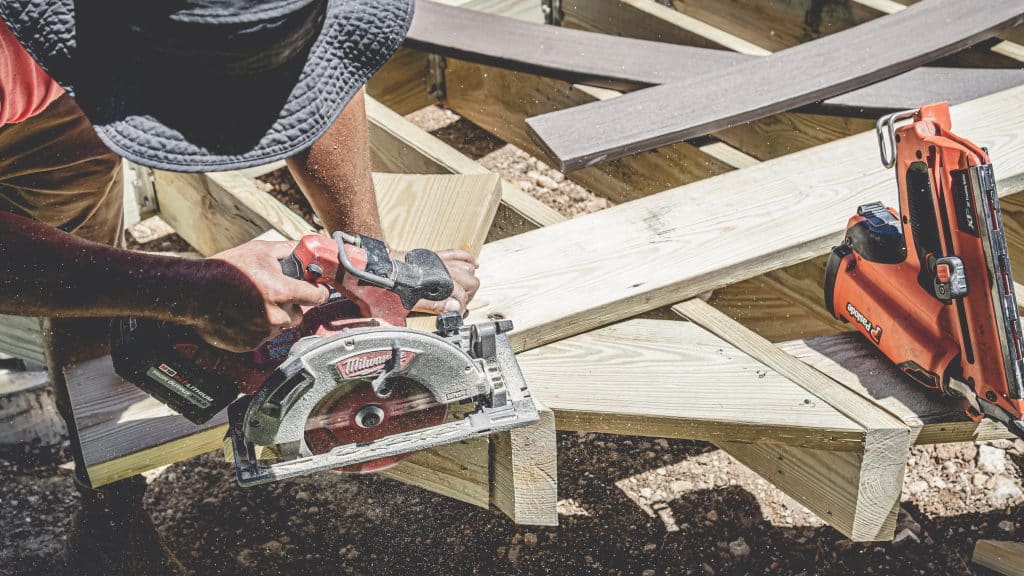
The Difference of Framing
To install composite, the best way to install it is with a border or known as a picture frame. Borders require a lot of blocking. Blocking is also needed for proper aluminum railing installation.
Old wood framing joists have crowns and natural bows. If you have wood decking now you may not see as many imperfections with the framing but if you put composite on the existing frame when the composite decking gets hot, it will form to the shape of the framing and you’ll most likely see more imperfections. Also wood decks often have seams or butt joists, this is where two deck boards meet on a shingle joist. These butt joists are often found throughout the deck due to the decking coming in 12’, 16’, 20’ lengths. When installing A composite decking it is best to add what is called a breaker board. A breaker board is a deck board that runs horizontally to the direction of the decking to break up long stretches of deck. Best practice is to install these breaker boards with blocking during the framing, this gives the composite decking a larger contact area allowing the decking to be able to expand and contract without bowing or even falling off of the joist.

Flashing & Ledger Board
What is Deck Flashing? Deck flashing is a thin material that creates a barrier to prevent moisture from entering the house in the openings you create when attaching your ledger connection. There are two different types of ledger flashing. Aluminum flashing used to be the industry standard and is what we find behind most decks we remove. The problem with aluminum flashing is any screw/nail penetrations will create a leak in the flashing especially when you fasten down the deck board closest to the house. Aluminum flashing will also start to decay over the years.

We find a lot of Aluminum flashing we remove is severely damaged due to penetrations and years being exposed to the elements. We prefer to use a rubber membrane type of flashing which is self sealing if penetrated. This type of flashing also does not decay over time from the harsh condition we use it in making it a far better option to flash a deck to a house. It can be hard to spot a leak in an existing deck flashing without removing the deck entirely and checking the condition of the house behind the ledger.
Leaking flashing can decay the structural integrity of the house band joist creating a weak connection between the house and ledger. This damage can lead to the total failure of the deck itself. Although deck collapses are uncommon, but do occur. In one study by the Consumer Products Safety Commission (CPSC), nearly 700 people per year were injured in deck collapses. Ledger failures are often at fault in collapses.
Faulty flashing led to water intrusion and rot in the plywood sheathing and band joist. The deck was only a few years old and looked terrific until it collapsed under the weight of a heavy snowfall.
To ensure a safe ledger connection, it is critical to properly flash the ledger area and to only use membrane and metal components that are compatible with today’s highly corrosive pressure-treated wood. The best lag screws and bolts in the world won’t help if the band joist they attach to has rotted due to water intrusion, as in the deck shown here. Unfortunately too many times have we removed a deck to find incorrect or no flashing.
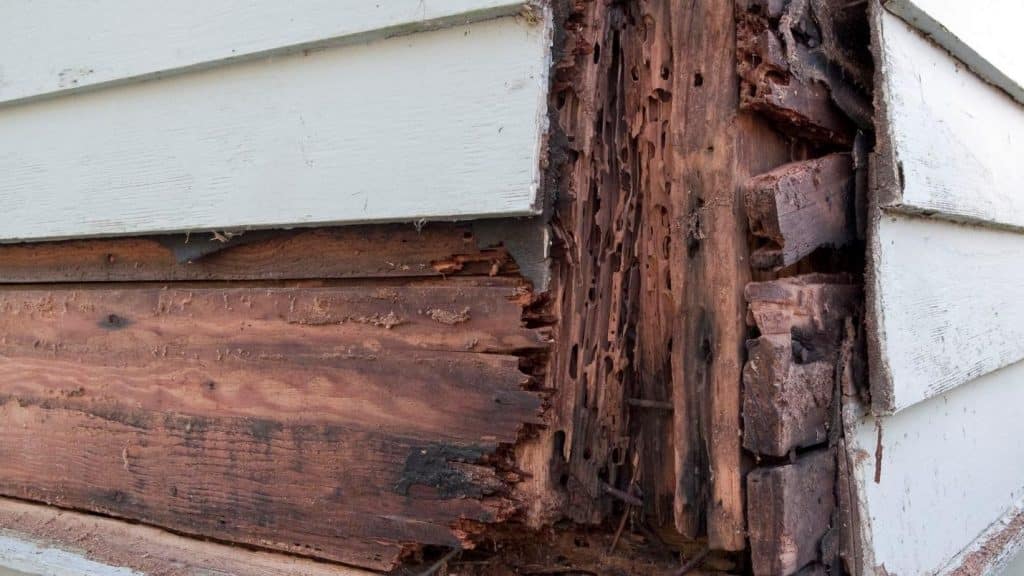
Rot
Most people often tell us their framing is sound and has no signs of rot. This could be the case but often decks are ground level and you have no way of telling the actual condition of the framing until we start demoing it. Even with decks that are higher off the ground the bottom of the joist may look good but you are unable to truly determine the condition of the top without removing the decking. The deck will often not feel bouncy when walking across it but that doesnt mean the top of the joist that are most exposed to the elements are rotted. As the tops of the framing start to rot the screws no longer have anything to hold on to and this is where you see the deck boards start to pop up. There is no way to properly fix this besides replacing the framing. With that being said most framing often only lasts 15 to 20 years. It often doesn’t make sense to place a composite that lasts 2 or 3 times that long on top of existing framing. With new framing we always add butyl tape to help extend the life of the framing and prevent it from rotting in the first place.

Below is an example of a deck with no border and a deck frame that was only three years old. When Fascia is installed flush with the decking, water and debris get trapped behind the Fascia and will cause rot pretty quickly.
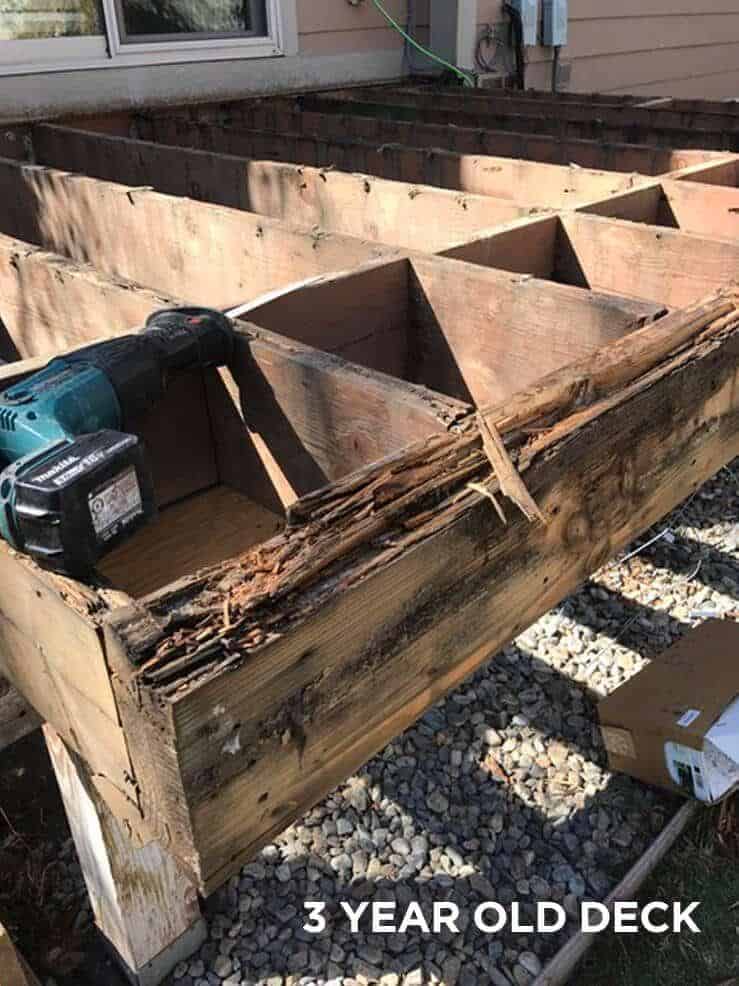
But wait, can’t I just replace the rotted or bad joists?
You can, but the issue is that when the deck framing was installed it was wet from the mill. Over time the old deck framing has dried out and the lumber has shrunk.
Now, if you go to replace the joists or add blocking your new lumber will not be the same size. Yes, you could plane it down but when it dries out they will not be the same size. So, there is so much work that goes into a properly built deck and when the framing is the least expensive part of the build are you willing to take that risk? A lot of times however, the deck’s framing just simply looks to be in better condition than it really is.
We also see those decks that don’t have any obvious framing problems. A lot of times the problems start on the inside of the board.
I can’t tell you how many times We’ve cut into an old deck frame as we disassemble it, and the outside looks fine, but the inside is completely rotted away.
This is usually caused by the small screw or nail holes in the top of the joists or beams allowing water to get inside the board. The water just sits there, decaying the wood. Sometimes it’s due to insects, such as ants or carpenter bees creating homes or nests inside the wood. This is very alarming when the joist looks good from the outside.
My suggestion, 99.9% of the time, is to start fresh. Not only is that the best way to know if your framing is completely safe, but you know it’s being built and installed correctly.
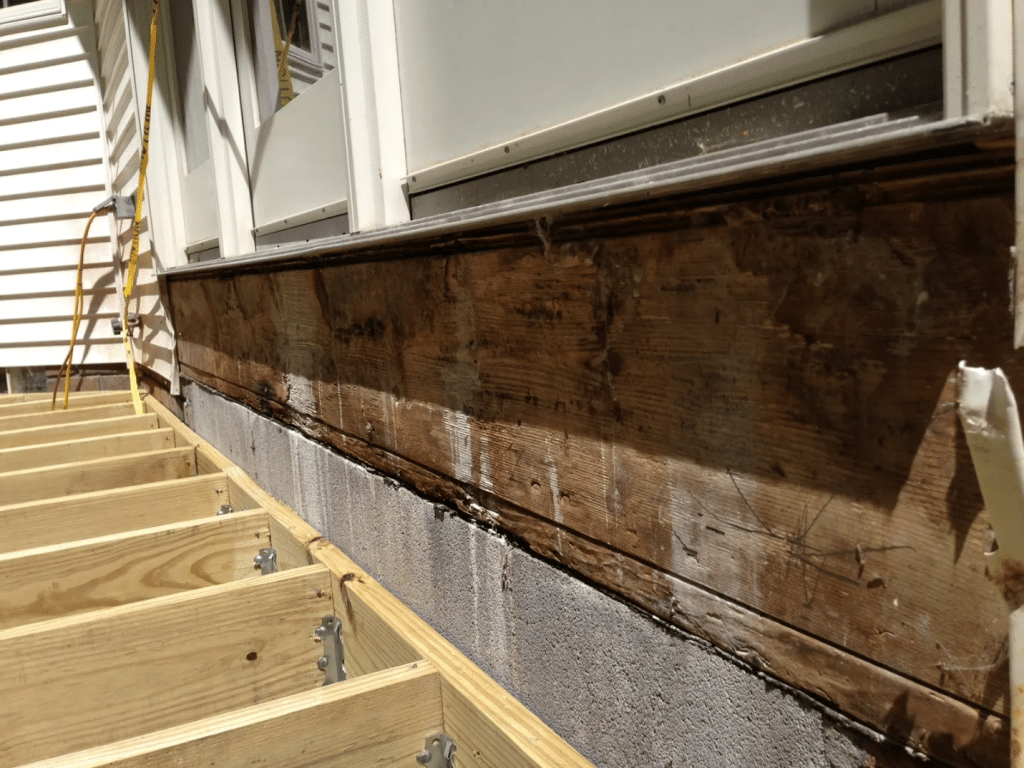
Labor costs of using old deck joist
When trying to save an old deck’s framework, we have to take more time when removing old decking and railings, as to not damage any of the framing, which increases labor costs. We also have to square up the old deck again and fix any damaged areas we see, which also potentially adds to the cost if not more than replacing entirely.
By the time you consider the extra work we have to add to get your old deck looking new, it’s not that much of a savings to risk all of the potential issues. Your new decking will also look much nicer and straighter with new structure to hold it up.
Best reason to replace your framing
Low maintenance composite decks usually come with at least a 25-50 year manufacturer warranty. The last thing most of our customers want is to have us install a 25-50 year product, only to have to rip everything up, because the old framing only lasted another five years.In other words your new decking will outlive your existing frame.
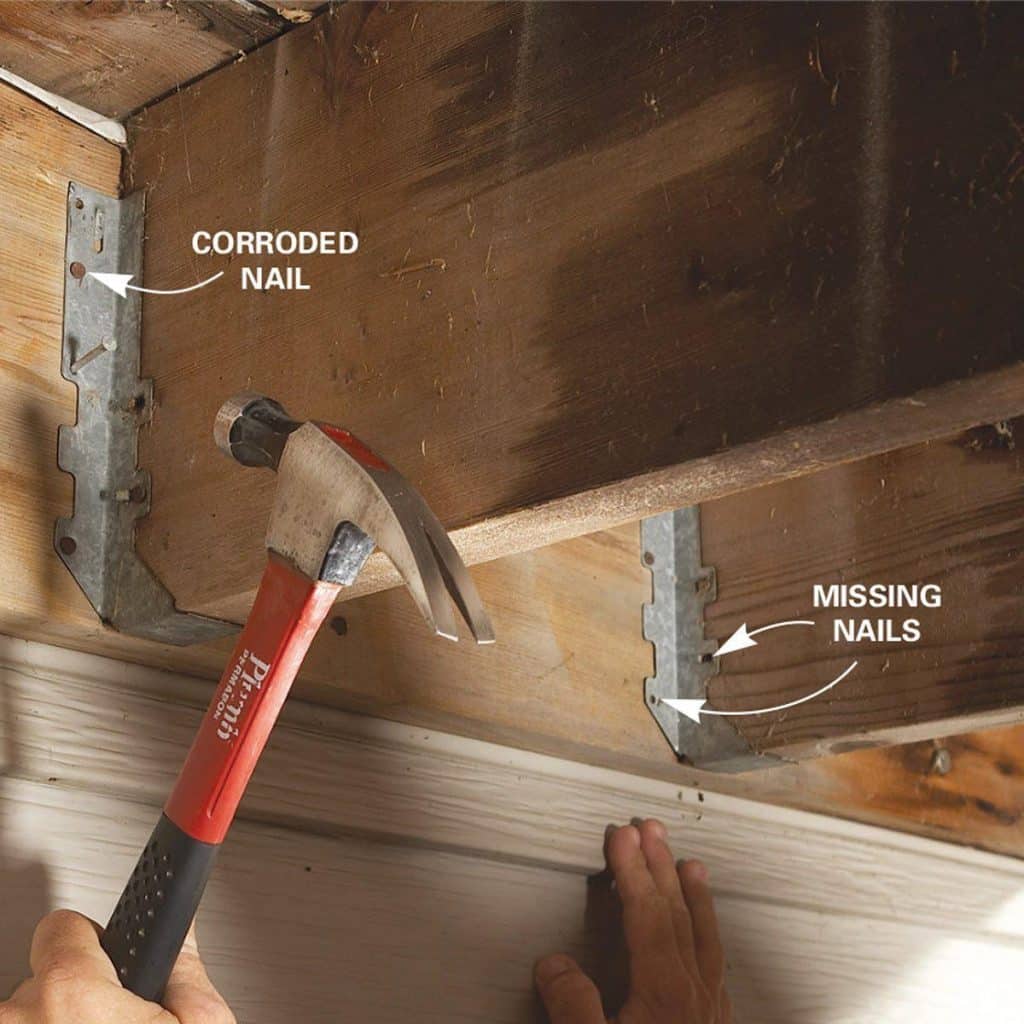
Choose wisely
Hopefully the above information will help you with your deck purchase in the future. In our experience, replacing the framing of the deck now will save a lot of money and headaches down the road.
I know it is a large investment but to do things right it simply costs money and you would be better off waiting until your budget allows to have it done right. There are plenty of companies locally that will not even explain this and just replace it because they are just there for a payday. We are not in business to just build decks.
We are in business to build you the best deck around and educate our clients on the pro’s and cons. Deck frame failures cause injuries and deaths every year so hiring the right contractor will be the most important decision you’ll have to make.
You’ll spend the same amount of money if you decide to start fresh with a new decking framing. Besides, your new decking frame will look much nicer with new “bones” to hold it up. You never know what may be lurking beneath.
https://www.google.com/maps?cid=2300364325239903716


